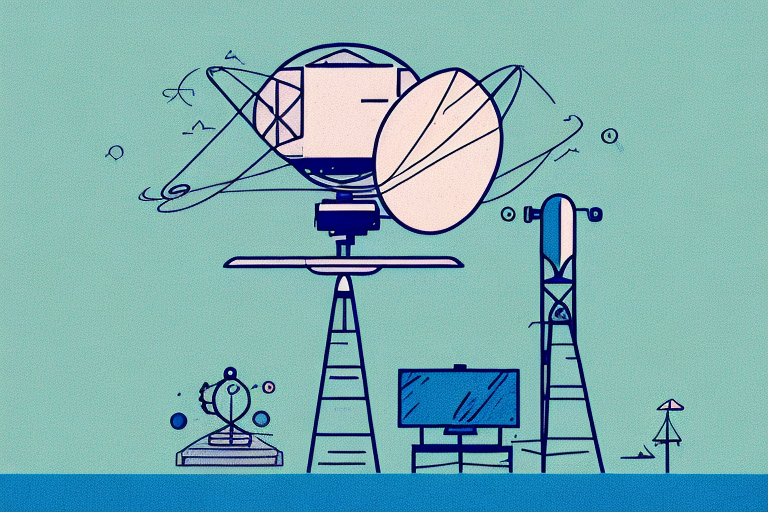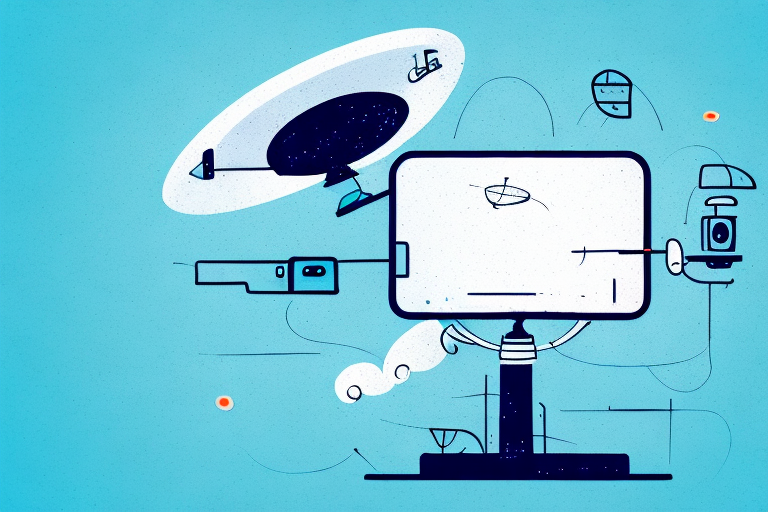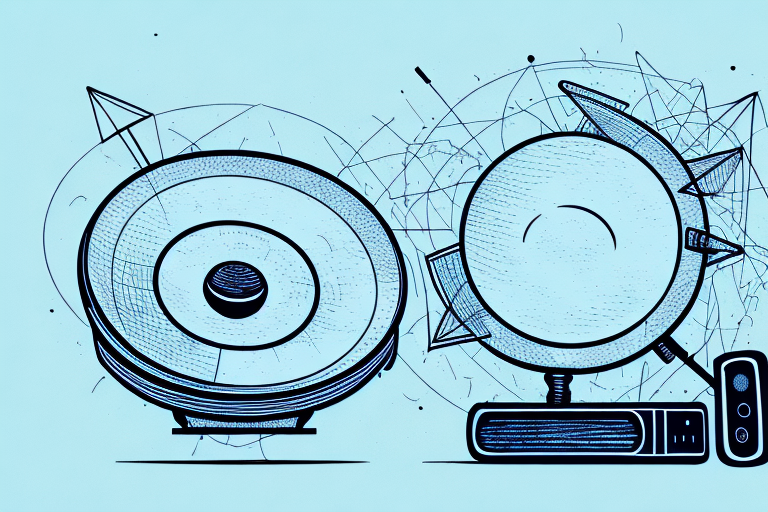In today’s era, satellite TV has become a common mode of entertainment around the world. With its quality transmission, exclusive content, and uninterrupted streaming, satellite TV has left an impression on every generation. But, have you ever wondered how satellite TV works? In this article, we will be discussing everything about satellite TV and its working mechanism.
Understanding Satellite TV Technology
The Role of Satellites in TV Broadcasting
Satellite TV has revolutionised the way we watch television, bringing a vast array of programming options to households around the world. The technology relies on communication satellites orbiting the Earth to deliver television programming to households. These satellites are positioned in geostationary orbit, meaning that they remain fixed in the same location as the Earth rotates. This allows for a stable signal and uninterrupted programming.
The satellites receive channels and content from the broadcasters on the ground, known as the uplink station. These signals are then transmitted to the satellite, which sends them back down to the ground where they are picked up by the satellite dish on your roof. The dish then sends the signal to your set-top box which decodes the signals and displays the content on your television.
One of the advantages of satellite TV is that it can reach remote areas that may not have access to traditional cable or terrestrial television. This has made it a popular choice for rural households and those living in areas with limited infrastructure.
The satellite dish and its function
The satellite dish is an integral part of the satellite TV system. It is designed to collect the signals from the orbiting satellite and deliver them to the set-top box inside your house. The dish has a parabolic shape which reflects the incoming signals from the satellite into a smaller focal point. This captured signal is then converted into an electrical signal and sent to the set-top box for decoding.
The size of the dish can vary depending on the signal strength and the location of the household. In areas with weaker signals, larger dishes may be required to capture the signal. In addition, the dish must be pointed in the direction of the satellite in order to receive the signal. This requires careful installation and alignment by a professional technician.
The set-top box and decoding signals
The set-top box is the device that decodes the incoming signal into a format that can be displayed on the television. It takes the compressed signal sent by the satellite and decodes it into a picture and sound format that can be displayed on the television screen. Set-top boxes can also include additional functionalities such as digital video recording (DVR), allowing viewers to record and store programs for later viewing.
One of the advantages of satellite TV is that it offers a wider range of programming options than traditional cable or terrestrial television. This includes international channels, sports packages, and premium movie channels. In addition, satellite TV can offer high-definition programming and 3D programming options, providing a more immersive viewing experience.
Overall, satellite TV has revolutionised the way we watch television, offering a wider range of programming options and reaching households in remote areas. The technology relies on communication satellites in geostationary orbit, as well as a satellite dish and set-top box to deliver programming to households around the world.
The History of Satellite TV
Early satellite TV development
Satellite TV technology dates back to the 1960s when the first communication satellite was launched into orbit. The first communication satellite, called Telstar, was launched in 1962 by the United States. This satellite was able to transmit television signals across the Atlantic Ocean for the first time in history.
However, the use of satellites for television broadcasting didn’t emerge until the 1970s, when the first satellite TV network was launched by Home Box Office (HBO). HBO’s satellite TV network was initially used to transmit programming to cable TV providers across the United States. This allowed cable TV providers like Virgin Media to offer a wider range of programming to their subscribers.
Initially, satellite TV was expensive and limited only to major broadcasters. However, advancements in technology have made it accessible to a wider audience. Today, satellite TV is available to anyone with a satellite dish and a subscription to a satellite TV provider.
The impact of satellite TV on the television industry
Satellite TV has had a significant impact on the television industry. It has allowed broadcasters to transmit their signal to a wider audience and reach areas where cable TV is not available. This has led to increased competition in the television industry, driving innovation and creating a more diverse range of content for viewers.
One of the biggest impacts of satellite TV has been on sports programming. Satellite TV providers offer exclusive sports packages that allow viewers to watch live sports from around the world. This has led to increased competition between sports broadcasters, driving up the price of broadcast rights for major sporting events.
Satellite TV has also allowed consumers to access a wider range of channels from around the world. This has led to increased cultural exchange and a more diverse range of programming options for viewers. Today, satellite TV providers offer programming in a wide range of languages, allowing viewers to access content from their home country or from around the world.
In conclusion, satellite TV has come a long way since its inception in the 1960s. Today, satellite TV providers offer a wide range of programming options to viewers around the world. The impact of satellite TV on the television industry has been significant, driving innovation and creating a more diverse range of content for viewers.
How Satellite TV Signals Are Transmitted
Satellite TV has revolutionised the way we watch television, bringing high-quality content to our screens from all over the world. But have you ever wondered how those signals are transmitted from the satellite to your TV? In this article, we’ll take a closer look at the process and technology behind satellite TV transmission.
The geostationary orbit
Satellite TV signals are transmitted using geostationary orbits. These orbits are positioned about 22,236 miles above the equator, allowing the satellite to remain in the same position relative to the Earth’s surface. This means that the satellite can provide coverage to a wide area, including entire countries or continents.
Geostationary orbits are ideal for satellite TV transmission because they allow the satellite to remain in a fixed position relative to the Earth’s surface. This means that the satellite dish on your rooftop can be pointed at the satellite and remain fixed in that position, without the need for constant adjustments.
However, there are some limitations to geostationary orbits. For example, the distance between the satellite and the Earth’s surface means that there is a delay in the signal transmission, known as latency. This is why satellite TV is not always the best option for real-time applications such as online gaming or video conferencing.
The uplink process
When broadcasters want to send content to their satellite, they use an uplink station. This station transmits the content up to the satellite using a data link. The uplink station uses a dish to transmit the signal at a high frequency, which is then received by the satellite in orbit.
The uplink process is a critical part of satellite TV transmission because it determines the quality of the signal that is sent to the satellite. The uplink station must use high-quality equipment and a powerful transmitter to ensure that the signal is strong enough to be received by the satellite.
In addition to the technical aspects of the uplink process, there are also regulatory considerations. Broadcasters must obtain licenses and adhere to regulations set by the International Telecommunication Union (ITU) to ensure that their transmissions do not interfere with other satellite or terrestrial systems.
The downlink process
Once the satellite has received the signal, it processes the signal and transmits it back down to Earth. The satellite sends the signal down using frequencies that are different from the ones used in the uplink process. This prevents interference between the two signals.
The downlink process is equally important as the uplink process in ensuring the quality of the signal that is received by your TV. The satellite must use a powerful transmitter to send the signal back down to Earth, and the receiving dish must be pointed accurately at the satellite to ensure that the signal is not lost or degraded.
Signal compression and encryption
Satellite TV signals are compressed and encrypted to ensure efficient transmission and protect the content from unauthorised access. Compression reduces the amount of data that needs to be transmitted, while encryption ensures that only authorised subscribers can access the content.
Compression is achieved using various algorithms that remove redundant or unnecessary data from the signal. This reduces the amount of data that needs to be transmitted, which in turn reduces the bandwidth required for transmission. Encryption, on the other hand, is used to protect the content from unauthorised access. The signal is encrypted using a key that is known only to authorised subscribers, ensuring that the content cannot be accessed by anyone who does not have the key.
Overall, satellite TV transmission is a complex process that involves advanced technology and careful planning. From the geostationary orbit to the uplink and downlink processes, each step is critical in ensuring that you can enjoy high-quality content on your TV.
Satellite TV vs. Cable TV
Comparing picture and sound quality
Satellite TV offers better picture and sound quality when compared to cable TV. This is because satellite TV uses digital signals to deliver content, while cable TV uses analog signals. Satellite TV also has a higher bandwidth, which allows it to deliver more channels and higher-quality content.
Channel availability and variety
Satellite TV providers offer a wider range of channels and content options when compared to cable TV. Satellite TV providers also offer international content, sports packages, and premium channels that are not available on cable TV.
Pricing and subscription options
Satellite TV providers offer lower pricing options than cable TV providers. They also offer different subscription packages to fit the needs of their customers. Furthermore, satellite TV providers often offer promotions and deals to attract new customers.
The impact of weather on signal reception
One downside of satellite TV is its susceptibility to weather interference. This can cause interruptions to signal and even lead to a complete loss of signal in extreme weather conditions. Cable TV, on the other hand, is not affected by weather and can be relied on for uninterrupted service.
Conclusion
In conclusion, satellite TV has become a popular mode of entertainment, reaching a wide audience around the world. The technology behind satellite TV, including the role of satellites, the satellite dish, and the set-top box, is complex but has revolutionised the way television is delivered. Although it has its pros and cons, satellite TV continues to thrive, offering an ever-increasing range of channels and content for its users.




